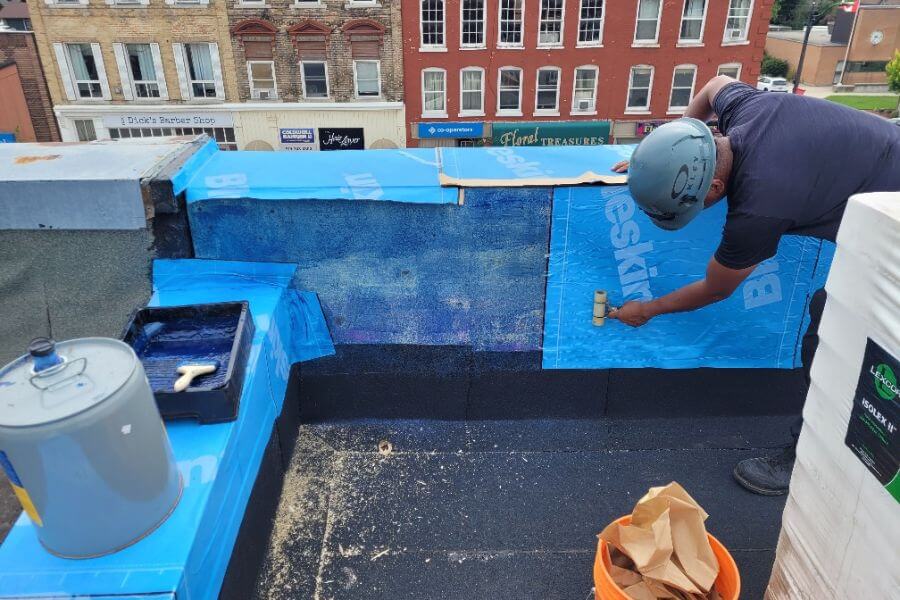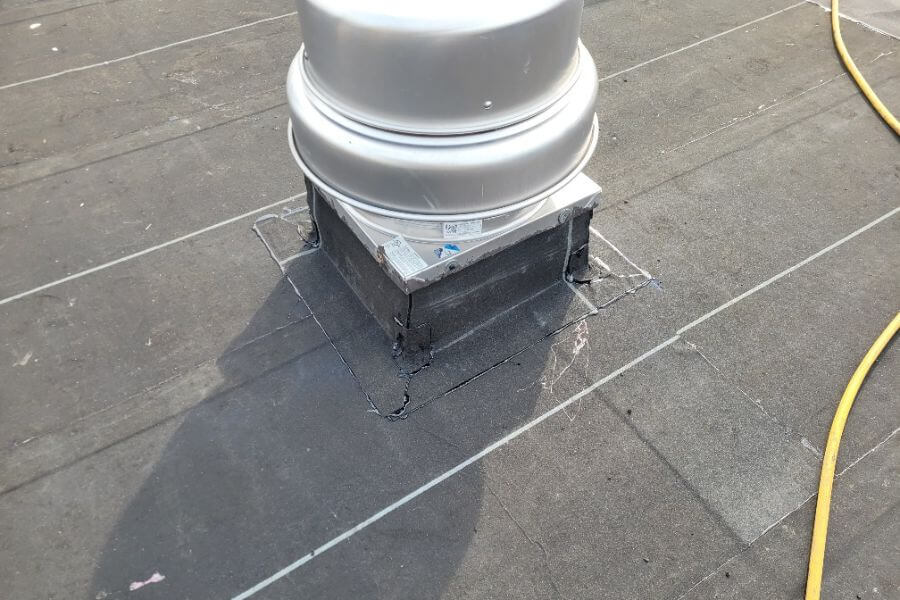Flat roofs are a popular choice for various types of buildings, including industrial, commercial and institutional properties. They offer a sleek, modern aesthetic and practical use of space. However, like any roofing system, it is important to understand the factors that might indicate a commercial flat roofing system replacement. In this article, we will explain the signs that might indicate it is time to replace your roof.
Whether you own an industrial facility or a commercial building Industrial Roofing is here to help you make informed decisions about the maintenance and longevity of your roofing system.
What Is a Flat Roof?
A flat roof is a roofing system characterized by its nearly level or low-sloped design, as opposed to the steep slopes of traditional pitched roofs. These roofs are commonly found on various types of structures, and they serve both practical and aesthetic purposes. Flat roofs are usually constructed with a slight slope to allow for water drainage, as stagnant water on the roof’s surface can lead to problems over time.

Typical Lifespan of Flat Roofs
The lifespan of a flat roof can vary depending on several factors, including the type of roofing material used, weather conditions, maintenance, and quality of installation. In general, well-maintained flat roofs can last anywhere from 20 to 25 years. However, it’s essential to monitor your roof regularly and be vigilant for signs of deterioration.

Signs Your Flat Roof Needs Replacement
Pooling Water
One of the most common issues with flat roofs is the formation of water pools, which can be a sign of improper drainage. If water consistently collects in specific areas and doesn’t drain properly, it can lead to structural damage and leaks. Addressing this issue promptly is crucial to protect the interior of your property.
Visible Leaks
A visible sign of roof problems is water leaking into your building. Water stains, damp spots, or mould growth on interior ceilings or walls are clear indicators of a compromised roof membrane. Ignoring these signs can lead to more extensive damage over time or the need for emergency roof leak assistance.
Blistering and Bubbling
Blistering and bubbling on the surface of your flat roof often indicate underlying issues. These defects are typically associated with adhesion failure and may result from poor workmanship, improper insulation, or inadequate ventilation. Ignored, blisters can lead to more significant problems and potential roof failure, leading to leaks and other interior problems.
Cracks and Tears
Easily noticeable, cracks and tears in your flat roof’s surface are clear signs of deterioration. Water can infiltrate these openings, leading to structural damage, and potentially causing the roof material to become uneven and unsafe to walk on.
Flashing Problems
Flat roofs, like other roofing systems, have flashing installed to prevent water intrusion at vulnerable areas such as vents and chimneys. When the flashing begins to separate from the roof’s edges and corners, moisture can become trapped, leading to leaks and ceiling damage.

Organic Growth
The presence of algae, lichens, or moss on your flat roof may not seem like a significant issue, but it signals unwanted water retention. Over time, organic growth can cause substantial damage to your roofing system and the building’s structure.
Damaged Top Coat
If you hear a fluttering sound during windy conditions, it could indicate damage to the top coating of your flat roof. The fluttering panels expose the underlying materials to the elements, potentially leading to weather or water damage if left unaddressed.
Excessive Energy Bills
A sudden increase in energy bills may be linked to an aging flat roof that is no longer providing adequate insulation. A well-maintained flat roof can help regulate indoor temperatures and reduce energy consumption.
Visible Roof Material Deterioration
Inspect the top layer of your flat roof for signs of wear and tear. If you notice cracks, bubbling, or missing granules (in the case of asphalt roofs), it’s a clear indication that the roof material has reached the end of its service life.
Loose Fasteners
In single-ply flat roofs, fasteners secure the membrane and other roofing materials. Over time, these fasteners can become loose due to weather, temperature fluctuations, and aging. Loose fasteners create gaps that allow water to penetrate, potentially causing damage.

Understanding the signs that indicate your flat roof needs replacement is crucial for maintaining the integrity of your building and preventing costly interior damage. Regular inspections and prompt action are essential in preserving the lifespan of your flat roof. If you notice any of these signs, it’s advisable to consult with a professional roofing company like Industrial Roofing Services Limited to assess your roof’s condition and determine whether a replacement is necessary.
Contact us today to schedule an appointment with our licenced and professional team.



